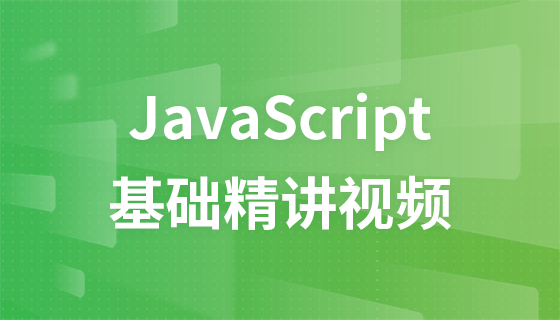
#相關免費學習推薦:javascript(影片)
本文從以下幾個面向著手
其實我也不知道咋回答這問題,我只知道,面試官問這個後,就表示他要問一堆繼承的問題了。以下是引用週老師的一段說詞。
"物件導向是一種程式設計思想與面向過程是對應的一般的語言都是物件導向的js本身也是基於物件導向建構出來的,例如js本身就有很多內建類,Promise就是,可以new Promise來建立一個實例,來管理非同步程式設計。還有vue 也是,平常都是建立vue的實例啊。"
var o1 = {name: 'o1'}
var o2 = new Object({name: 'o2'})var M = function(name){
this.name = name
}
var o3 = new M('o3')var o4 = Object.create(p)
建構子實例(物件)有,實例, constructor ,__ proto__ ,prototype, 首先要記住他們的關係
其實
建構子, 實例, constructor, __ proto__, prototype 的關係已經在上面的例子和3點介紹中介紹完了。不妨再回顧一下
加建構函式 ,產生的物件即為實例。
o3.__proto__ === M.prototype //true o3.prototype //undefined o3.__proto__ === M.prototype //true
o3.constructor === M.prototype.constructor // true o3.constructor === M //true
3 instanceof 模擬實作
[] instanceof Array // true
即左邊是對象,右邊是類型,instanceof 就是要判斷右邊類型的prototype,是否在左邊實例的原型鏈上,如下例子所示
[].__proto__ === Array.prototype //true Array.prototype.__proto__ === Object.prototype //true Object.prototype__proto__ //null
new的過程發生了什麼?4 new 模擬實現(簡要版)function myInstanceof2(left, right){ if(left === null || left === undefined){ return false } if(right.prototype === left.__proto__) { return true } left = left.__proto__ return myInstanceof2(left, right) } console.log(myInstanceof2([], Array))登入後複製
賦值為建構子的prototype
// 构造函数
function M(name){
this.name = name
}
// 原生new
var obj = new M('123')
// 模拟实现
function create() {
// 生成空对象
let obj = {}
// 拿到传进来参数的第一项,并改变参数类数组
let Con = [].shift.call(arguments)
// 对空对象的原型指向赋值
obj.__proto__ = Con.prototype
// 绑定this
//(对应下面使用来说明:Con是参数第一项M,
// arguments是参数['123'],
// 就是 M方法执行,参数是'123',执行这个函数的this是obj)
let result = Con.apply(obj, arguments)
return result instanceof Object ? result : obj
}
var testObj = create(M, '123')
console.log('testObj', testObj) // 构造方法方式
function Parent1(){
this.name = 'Parent1'
}
Parent1.prototype.say = function () {
alert('say')
}
function Child1(){
Parent1.call(this)
this.type = 'type'
}
var c1 = new Child1()
c1.say() //报错##思考: 為什麼call 實現了繼承,call本質是什麼?
只借助原型繼承核心Child2.prototype = new Parent2()
// 原型
function Parent2(){
this.name = 'Parent2'
this.arr = [1,2]
}
Parent2.prototype.say = function () {
alert('say')
}
function Child2(){
// Parent2.call(this)
this.type = 'type'
}
Child2.prototype = new Parent2()
var c21 = new Child2()
var c22 = new Child2()
c21.say()
c21.arr.push('9')
console.log('c21.arr : ', c21.arr)
console.log('c22.arr : ', c22.arr)思考:為什麼這麼寫是同一個引用?
組合繼承1
思考: 這麼寫就沒有問題了嗎?function Parent3(){ this.name = 'Parent3' this.arr = [1,2] } Parent3.prototype.say = function () { alert('say') } function Child3(){ Parent3.call(this) this.type = 'type' } Child3.prototype = new Parent3() var c31 = new Child3() var c32 = new Child3() c31.say() c31.arr.push('9') console.log('c31.arr : ', c31.arr) console.log('c31.arr : ', c32.arr)登入後複製
答 : 生成一个实例要执行 Parent3.call(this) , new Child3(),也就是Parent3执行了两遍。
改变上例子 的
Child3.prototype = new Parent3()
为
Child3.prototype = Parent3.prototype
缺点 : 很明显,无法定义子类构造函数原型私有的方法
组合继承优化3 再次改变上例子 的
Child3.prototype = Parent3.prototype
为
Child3.prototype = Object.create(Parent3.prototype)
问题就都解决了。 因为Object.create的原理是:生成一个对象,这个对象的proto, 指向所传的参数。
思考 :是否还有疏漏?一时想不起来的话,可以看下这几个结果
console.log(c31 instanceof Child3) // true console.log(c31 instanceof Parent3) // true console.log(c31.constructor === Child3) // false console.log(c31.constructor === Parent3) // true
所以回想起文章开头所说的那几个需要牢记的点,就需要重新赋值一下子类构造函数的constructor: Child3.prototype.constructor = Child3,完整版如下
function Parent3(){
this.name = 'Parent3'
this.arr = [1,2]
}
Parent3.prototype.say = function () {
alert('say')
}
function Child3(){
Parent3.call(this)
this.type = 'type'
}
Child3.prototype = Object.create(Parent3.prototype)
Child3.prototype.constructor = Child3
var c31 = new Child3()
var c32 = new Child3()
c31.say()
c31.arr.push('9')
console.log('c31.arr : ', c31.arr)
console.log('c31.arr : ', c32.arr)
console.log('c31 instanceof Child3 : ', c31 instanceof Child3)
console.log('c31 instanceof Parent3 : ', c31 instanceof Parent3)
console.log('c31.constructor === Child3 : ', c31.constructor === Child3)
console.log('c31.constructor === Parent3 : ', c31.constructor === Parent3)5 es6的继承
class Parent{
constructor(name) {
this.name = name
}
getName(){
return this.name
}
}
class Child{
constructor(age) {
this.age = age
}
getAge(){
return this.age
}
}es6继承记住几个注意事项吧

注意写了extends关键字,constructor中就必须写super(),打印结果如下:

以上是javascript原型和繼承是面試必會的的詳細內容。更多資訊請關注PHP中文網其他相關文章!



